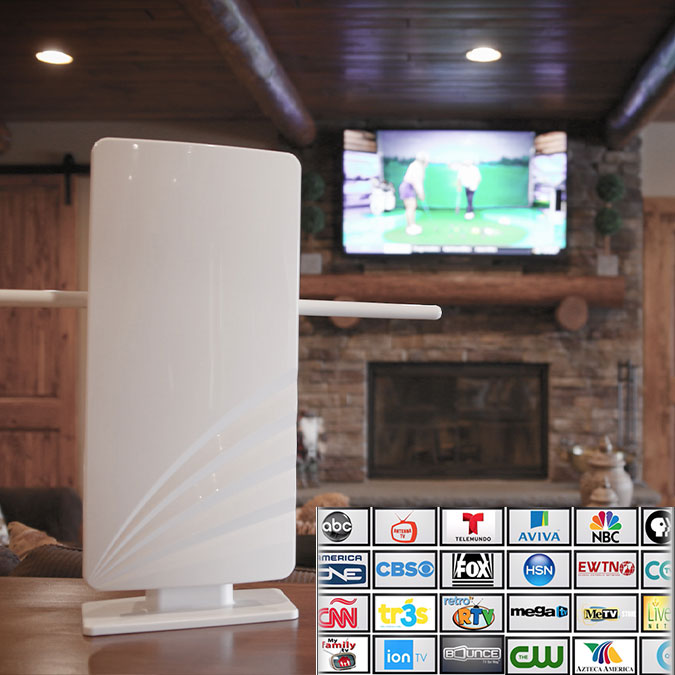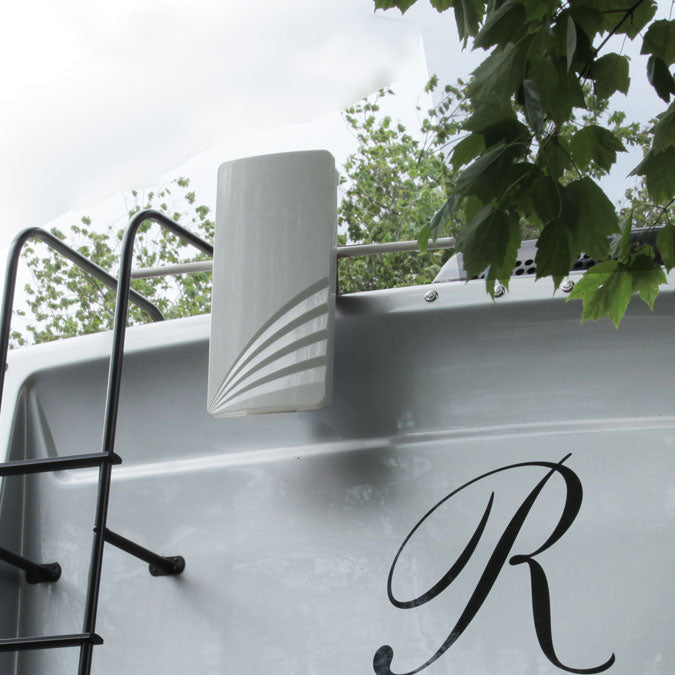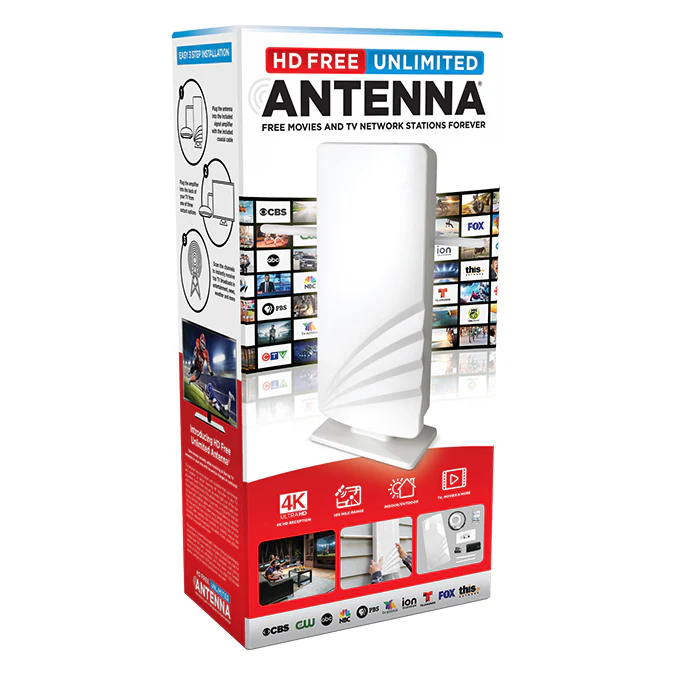An HD free antenna is a cost-effective solution for watching high-definition television without the need for cable or satellite services. This type of antenna allows you to receive over-the-air (OTA) signals broadcasted by local television stations, providing access to various channels for free. Whether you’re watching the latest news, sports, or prime-time TV shows, an HD antenna offers clarity and convenience at no monthly cost.
Many consumers are switching to HD free antennas as they become aware of the cost-saving benefits. With advancements in technology, these antennas now deliver superior quality in both sound and image. Installing one is relatively simple, making it a perfect option for cord-cutters and those looking to reduce entertainment expenses. Moreover, in many regions, the range of available channels has expanded significantly, offering more variety for viewers.
How HD Free Antennas Work
HD antennas work by capturing broadcast signals transmitted from local TV stations’ towers. These signals are sent out through the airwaves and can be picked up by antennas within a specified range. The process of receiving these signals is simple; the antenna translates the waves into a digital signal that your television can decode.
It’s important to understand that the quality of the signal you receive will depend on factors such as your distance from the broadcasting towers, geographic location, and any physical obstructions like buildings or trees. HD antennas come in various designs, allowing you to choose the best model for your setup, whether indoors or outdoors.
Benefits of Switching to an HD Free Antenna
One of the most significant advantages of switching to an HD free antenna is the savings on cable or satellite fees. By eliminating monthly subscription costs, users can still access high-quality programming. HD antennas provide excellent picture quality, often delivering content in 1080p or higher, depending on the broadcast signal.
Additionally, an HD antenna provides access to local news, weather, and sports programming that may not be available through paid streaming services. Another benefit is that HD antennas are relatively easy to install and maintain. You don’t need to worry about complex setups or expensive equipment; most models come with simple installation guides, making it accessible to all types of users.
Different Types of HD Free Antennas
There are several types of HD antennas available, each designed for specific needs. The most common types include indoor antennas, outdoor antennas, and attic antennas. Indoor antennas are ideal for urban areas where broadcasting towers are nearby. They are compact and easy to set up inside your home.
Outdoor antennas, on the other hand, are more suitable for rural areas where broadcasting towers are farther away. These antennas provide a more extended range, ensuring better signal reception. Lastly, attic antennas are placed in the attic space of your home and offer a middle ground between indoor and outdoor antennas. They are protected from weather elements while still providing a more extended range than indoor models.
Key Features to Consider When Buying an HD Antenna
Before purchasing an HD free antenna, it’s essential to consider several factors. First, determine the range you need based on your proximity to broadcasting towers. The range of an antenna is critical to ensure you receive a strong, clear signal.
Next, consider the type of antenna. Indoor antennas are suitable for those living in urban areas, while outdoor or attic antennas may be required for rural locations. Additionally, ensure that the antenna supports the full HD spectrum, allowing you to receive 720p, 1080p, and even 4K channels if available.
Installation Tips for HD Free Antennas
Installing an HD free antenna can be a straightforward process if you follow the necessary steps. First, determine the best location for your antenna. For indoor antennas, place them near a window and away from electronic devices that could interfere with the signal. Outdoor antennas should be mounted as high as possible, ideally on the roof or a pole, to minimize obstructions.
Once you’ve placed your antenna, connect it to your TV using a coaxial cable. After the physical setup, run a channel scan on your TV to detect the available signals. You may need to adjust the antenna’s position slightly to maximize reception and ensure a clear picture.
Indoor vs. Outdoor HD Antennas: Which is Better?
Choosing between an indoor and outdoor antenna depends on several factors, including your location and preferences. Indoor antennas are easy to install and work well in areas close to broadcasting towers. They are compact and don’t require any special mounting.
Outdoor antennas, however, provide better reception, especially in rural areas or places with significant obstacles like mountains or tall buildings. They can capture weaker signals over longer distances, ensuring a more stable viewing experience. The downside is that outdoor antennas require more complex installation and are exposed to weather conditions.
HD Antennas and Digital TV Compatibility
One of the critical factors in using an HD antenna is ensuring compatibility with your TV. Most modern TVs come with a built-in digital tuner, making them ready for HD antennas. If your TV is older, you may need a separate digital converter box to decode the signals captured by the antenna.
The digital tuner is essential for converting the OTA signal into a format that your TV can display. Before purchasing an antenna, verify your TV’s specifications to see if it includes a digital tuner. If not, you can easily purchase a converter box to work alongside your antenna.
Boosting Signal Strength for HD Free Antennas
If you’re experiencing weak signals or intermittent reception, several methods can help boost your antenna’s performance. First, consider installing a signal amplifier, which strengthens the signals captured by the antenna. Amplifiers are especially useful for long-distance signals or if there are obstructions such as buildings or trees in the way.
Another option is repositioning the antenna for optimal placement. Moving it higher or closer to a window can improve signal quality. In some cases, switching to an outdoor antenna may be necessary for enhanced reception, particularly if you live in a rural area.
Common Issues with HD Free Antennas and Solutions
Like any technology, HD free antennas can occasionally face issues. One common problem is poor signal reception, often caused by physical obstacles like buildings or trees. To resolve this, try repositioning your antenna or moving it to a higher location. Alternatively, upgrading to a stronger, outdoor antenna may solve the problem.
Another issue users encounter is pixelation or freezing during playback. This is usually due to weak signals, and the solution could involve installing a signal booster or switching to a higher-quality antenna model. Ensuring proper placement and checking for interference from electronic devices can also help.
Free vs. Paid TV: Why Choose an HD Free Antenna?
HD free antennas offer a viable alternative to paid TV services like cable or satellite. With no monthly fees and access to various local and national channels, they provide excellent value. For individuals or families looking to cut down on entertainment expenses without sacrificing quality, HD antennas are an attractive option.
Paid services often bundle numerous channels, but many of them go unwatched. In contrast, an HD antenna allows you to focus on local programming, news, and popular network shows without the extra clutter. While streaming services can complement an antenna setup, the core benefit lies in the savings and simplicity of free OTA broadcasts.
How Weather Affects HD Free Antenna Reception
Weather conditions can impact the performance of HD free antenna, particularly outdoor models. Heavy rain, snow, or wind can disrupt signal reception, leading to pixelation or signal loss. While indoor antennas are less susceptible to weather interference, their range may still be limited by environmental factors.
To minimize weather-related issues, ensure your outdoor antenna is securely mounted and that any cables are properly shielded. In extreme cases, signal boosters may help maintain consistent reception during inclement weather. Regular maintenance and occasional repositioning can also mitigate potential problems caused by weather conditions.
FAQ
How do I choose the best HD antenna for my location?
The best way to choose an HD antenna is to consider your distance from the broadcast towers and any potential obstacles, such as buildings or trees. Urban areas typically do well with indoor antennas, while rural locations may need outdoor models for better reception. Always check the range of the antenna before purchasing.
Do I need internet access to use an HD free antenna?
No, an HD free antenna does not require internet access. It captures over-the-air signals broadcast by local television stations. However, if you want to complement your viewing experience with online streaming, internet access would be necessary for services like Netflix or Hulu.
Can I receive HD channels with an older TV?
Yes, but if your TV is older and lacks a built-in digital tuner, you’ll need a digital converter box. This device decodes the digital signals received by the antenna and makes them compatible with your older TV. Most modern televisions have digital tuners pre-installed, so this step isn’t necessary for newer models.


